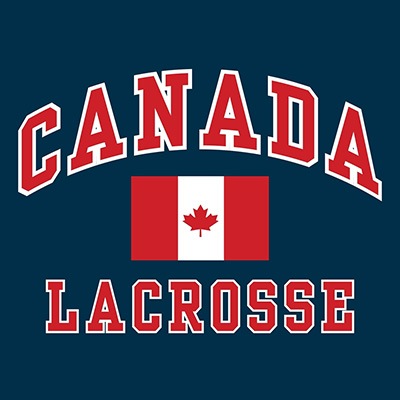Lacrosse is an ancient sport that has been passed down through generations, connecting nations and cultures.
Lacrosse in Canada dates back centuries, with Indigenous tribes being credited for playing the game's first version.
From its roots in traditional culture to becoming a popular team sport all over the world, here's a look at how lacrosse developed and evolved in Canada through modern times.
More...
Take Away Key Points:
Lacrosse Canada: All You Need to Know
Modern lacrosse has been an active port of sport in Canada since the middle 1800s. Field lacrosse was a traditional game until box lacrosse as a popular sport was introduced in the 1930s.
1. Lacrosse as a Canada's National Summer Sport

In 1994, the Canadian federal Government passed the National Sports Act making lacrosse Canada's National Summer Sport. The Act will also recognize hockey as Canada's National Winter Sport.
So let's see the development and growth of the competitive sport of lacrosse inside Canadian borders.
2. The rich history of lacrosse Canada
As an official sport in Canada, lacrosse has a rich history and development. It's Canada's oldest sport due to its Indigenous heritage. Indigenous peoples played lacrosse first games in multiple Indigenous communities across Canada and the USA borders.
The Indigenous peoples discovered and invented field lacrosse in Canada before the European settlers reached the American coasts. However, European settlers documented the first Indigenous players in 1637 with the first game description.
To Indigenous players and other non-Indigenous teams, the game was called baggataway, Medicine game, and Creator's game used to settle disputes and prepare Indigenous youth for the war. The Creator's Game included two teams of between 100 and 1000 players on a field stretching between 1600 feet to 1.9 miles.
The French missionary named the game after the French word for the stick - la crosse when he first witnessed the First Nations playing lacrosse with long sticks and the ball.
The Anglophone Montreal middle class accepted the sport in the mid-1800s. However, the first recorded Creator's game between the European settlers and First Nations occurred in 1843.
However, William George Beers, a Canadian dentist, established the Montreal lacrosse club in 1856, and up to the 1860s, there were multiple active lacrosse teams across Eastern Ontario.
Beers even traveled with a group of Indigenous communities to Britain to showcase the part of Native culture. Queen Victoria attended the game. This led to the further development of the lacrosse community and its long history.
The first modern version of lacrosse
William George Beers established the modern lacrosse version. First, he changed the number of players participating in the game of lacrosse - twelve per team, divided into two field parts.
William George Beers also changed the ball type - instead of the deerskin ball, lacrosse players used the rubber ball, which was smaller in size. He also changed the lacrosse stick - it became shorter, with a metal shaft and plastic head.
Finally, he introduced the protective equipment the lacrosse players would wear during the matches.
By the end of 1880, the young nation gained even more interest in the sport, so it became a popular spectator sport. However, the officials had to deal with the violence, and as the vast majority of lacrosse players and spectators were working class, the main focus was on winning at all costs. The working class had to defeat the middle class.
However, in 1860, there was a new level of aggressiveness in the lacrosse game. Toronto and Montreal clubs were protestant lacrosse teams playing against the Irish catholic clubs. By the end of the 19th century, field lacrosse was widely spread across Quebec and Southern Ontario.
In 1887, the Toronto lacrosse club used hockey as a winter sport. During the 1890s, lacrosse was Canada's most popular summer sport, followed by the 1900s, with two professional lacrosse leagues.
But, violence between the lacrosse members divided the lacrosse association in 1914, so the professional league separated in Vancouver, Montreal, Victoria, New Westminster, and a few small residential schools. However, this led to the establishment of another great association responsible for the future of lacrosse Canada.
3. Canadian sport at the Olympic Games
Although lacrosse was part of the Olympic Games in 1904 and 1908, it was excluded from the championship, even though the country sent an official delegation to change the situation and bring the support back in the tournament or Commonwealth games.
However, Canada won more gold medals than any other country during the Olympics, so the Canadian Government still preserves the re-creation and improvement of the game. It became a part of Canadian culture and Canadian identity.
As Canada's official summer sport, many people would be excited to see it become an Olympic sport. There have been serious attempts to make lacrosse an Olympic sport for decades, but despite Canada's status as one of the leaders in its development, no progress has been seen yet. Despite this, many are hopeful that this unique combination of athleticism and tradition will soon be included on the world stage.
4. National Lacrosse Association

The National Lacrosse Association of Canada is an organization that works to promote and develop the sport of lacrosse. The NLA was established in 1875, making it one of Canada's oldest amateur sports organizations. It is also the oldest governing body of any North American team sport. However, in 1880, the league became the National Amateur Lacrosse Association.
With more than 250,000 registered players, the NLA sets a high standard for lacrosse safety and fair play by providing refining clinics and coaching education programs.
The association oversees leagues at various levels of competition, ranging from youth to professional games. In addition, the NLA organizes championships and all-star events for those involved with the sport throughout the year. Because of its commitment to making lacrosse accessible to everyone, this organization remains a leader in organized team sports for Canadians.
At the World Lacrosse Championship held in London, Ontario, in 2006, Canada beat the United States in the final. One of the best lacrosse players of all time, Gary Gait, was born in Victoria, British Columbia. Gait won every major lacrosse championship. Canadian Lacrosse Hall of Fame recognizes great achievements in lacrosse Canada.
5. Canadian Lacrosse Association
The Canadian Lacrosse Association is the governing body for lacrosse in Canada, established in 1925. The CLA is dedicated to developing organized lacrosse throughout the country, providing athletes and teams with resources, opportunities, and a safe, competitive environment.
As part of its mission, the CLA works to promote organization-wide respect for all participants; foster an appreciation for lacrosse's heritage and traditions; recognize excellence in innovation and performance; ensure fairness through rule interpretations and initiatives; and support fans from coast-to-coast with amazing events.
The CLA currently consists of seven provincial associations:
1. Alberta Lacrosse Association (ALA),
2. British Columbia Lacrosse Association (BCLA),
3. Indigenous Nations Lacrosse Association (INLA),
4. Manitoba Lacrosse Association (MLLA),
5. Ontario Lacrosse Association (OLA),
6. Quebec Lacrosse Federation (QFLAX) and
7. Saskatchewan Lacrosse Association Inc. (SLA).
By uniting these associations under one umbrella organization, the vision of the Canadian Lacrosse Association is worked towards — promoting lacrosse as Canada's National Summer Sport. In addition, the CLA is the main responsible for both men's and women's field lacrosse versions and box lacrosse.
6. Box lacrosse
Box lacrosse, sometimes referred to as boxla or indoor lacrosse, is an exciting hybrid sport that combines field lacrosse's physicality with fast-paced action and a unique playing area of hockey.
The box version stretches back to the 1930s when Canadian fans, who could not follow their teams indoors during cold winters, saw the need for a close-quarters version of the game. Today, box lacrosse has become increasingly popular in its own right, both as an off-season training program for field lacrosse players and as its professional competition.
The rules mostly resemble traditional field lacrosse - two teams are given sticks and attempt to move a ball into the opposing net – but player formations and round nets distinguish it from its ancestor.
Furthering the speedy nature of play are increased substitutions and intentional faceoff violations. Filled with a competitive spirit and high energy, box lacrosse will keep any spectator enthralled from start to finish!
The main governing body for box lacrosse - National Lacrosse League, was formed in 1978 and consisted of fifteen teams across the United States and Canada.
7. Canada's National Game: The present time
Canada took part in the 2003 inaugural World Indoor Lacrosse Championship. Since its declaration as Canada's national game, lacrosse has been played at Revenue Canada with five other national sporting associations.
In addition, the OLA controls lacrosse in Ontario. The officials are represented by the Ontario Referee Lacrosse Association - ORLA.
The OLRA has a governing structure open only to Box lacrosse officials, contrary to typical referee associations. The officials rule Senior, Junior, and Major-series games, even though multiple officials do not officiate at that level.
a. National Competitions
Canada is proud to host some of the most highly regarded National Lacrosse competitions worldwide. Every year, major tournaments like the Minto and the Mann Cup draw players from around the country, offering a chance for athletes to showcase their skills at the highest level of lacrosse play in the nation.
The games are thrilling spectacles, guaranteed to provide top-quality entertainment and exciting moments for those lucky enough to attend. Canada's National Lacrosse competitions consistently generate buzz within the community and attract fans from near and far who come out to cheer on their favorite teams.
For lacrosse Canada players, competing in one of these prestigious tournaments is an opportunity not to be missed.
b. Club competitions
Canada's lacrosse club competition is a sight to behold. Both men's and women's national teams are constantly in contention for international tournaments, showing that the country's love for the sport runs deep. Many local clubs across Canada have competitive systems, proving that Canadians take the game seriously nationally and worldwide.
Enthusiasts of lacrosse can find comfort in knowing that there is an ever-growing competitive landscape within the country, making Canadian lacrosse a quality benchmark. Some of the best lacrosse Canada teams include:
- Vancouver Warriors
- Toronto Rock
- Saskatchewan Rush
- Halifax Thunderbirds
- Calgary Roughnecks.
These are the best current NLL clubs. In addition, the best MLL lacrosse teams include:
- Hamilton Nationals
- Toronto Nationals
However, the best women's teams in lacrosse Canada include:
- Oshawa Lady Blue Knights
- Oakville Lady Hawks
- Orangeville Northmen
- Team BC
- Minnesota Elite
8. Best Canadian lacrosse players ever

Canadian lacrosse has a vibrant history, spanning centuries and centuries of play. As its popularity grew, so did the talent level of players across the country.
There are some incredible athletes throughout Canadian lacrosse history whose names deserve immortalization for their excellence in the game - from Jack Bionda in the 1950s to Tracey Kelusky in more present-day competitions.
Jack Bionda is considered one of the best lacrosse players ever to play. He was a two-time Mann Cup champion, as well as an MVP and Most Gentlemanly Player award recipient in consecutive seasons. He entered the Hall of Fame in 1974.
Tracey Kelusky, on the other hand, had a remarkable National Lacrosse League career between 2001 and 2012, earning him multiple honors, such as NLL's most valuable player designation in 2006.
Both men continue to be held up as examples of hard work, dedication, and immense skill within Canadian lacrosse circles.
Frequently Asked Questions
Is lacrosse popular in Canada?
Yes, lacrosse has been popular in Canada since the 1800s.
Why is lacrosse so important to Canada?
The sport is part of Canadian culture, heritage, and tradition, so it's important to Canada.
Do Canadians like lacrosse?
Yes, Canadians like lacrosse, as they declared lacrosse as Canada's national game.
Where is lacrosse most popular in Canada?
Lacrosse is the most popular in Quebec.
How many lacrosse teams are there in Canada?
There are five Canadian teams, part of the NLL:
- Halifax Nova Scotia
- Hamilton Ontario
- Calgary Alberta
- Saskatoon Saskatchewan
- Vancouver British Columbia
How to watch NCAA lacrosse in Canada?
You can go to Sling TV Orange, YouTube TV, and DirecTV stream with ExpressVPN.
Where to watch the Premier Lacrosse League in Canada?
You can watch it at TSNDirect when you click here.
Summary
In closing, lacrosse has come a long way to become Canada's national game today. From its Indigenous roots to its adaptation by Western settlers, the game has evolved over the years and is now enjoyed by millions of people worldwide.
Its deep history and passion capture all that is unique about Canadian culture, and it's no wonder this sport has earned such dedication and admiration.
With communities coming together across Canada to share in the camaraderie of the "national game," lacrosse offers an exciting glimpse into our cultural heritage and a symbol of what it means to be Canadian.
Whether you are a fan or a first-timer for lacrosse in Canada, it supports a stronger sense of national identity that will always be woven into our cultural fabric.
